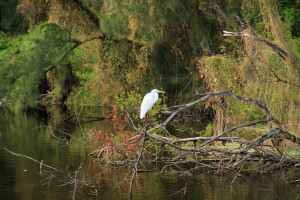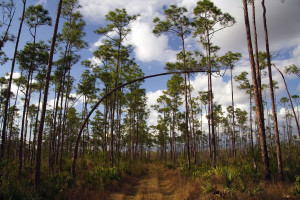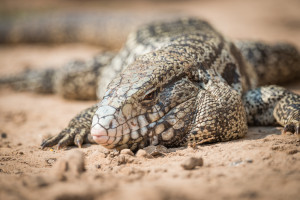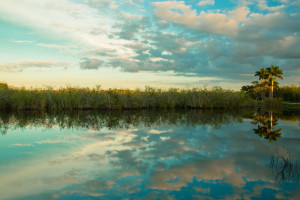 It’s officially the dry season in the Everglades and Florida, which is the best time to head down to the area to view an array of different wildlife species. During this time of year, the good weather combined with low water levels creates the perfect conditions and environment for animals and birds to congregate near bodies of water.
It’s officially the dry season in the Everglades and Florida, which is the best time to head down to the area to view an array of different wildlife species. During this time of year, the good weather combined with low water levels creates the perfect conditions and environment for animals and birds to congregate near bodies of water.
Great spots in the Everglades to view wildlife include: Shark Valley, the Anhinga Trail (Royal Palm), Eco Pond (a mile past the Flamingo Visitor Center), Snake Bight (near Flamingo), and Chokoloskee Bay (Gulf Coast).
Visitors to the Park have the opportunity to see alligators, wading birds, freshwater wildlife, and a few other land creatures. Since the animals are in their natural habitat, they are wild and visitors should be respectful to both the animals and the environment in which they call home.
Below, we’ve shared a few rules and tips on viewing the animals in the Park.
- Keep your space from animals and birds. Remember you’re in their home and shouldn’t disturb them (do not pick up or chase). Binoculars provide a great way to get a closer, detailed look at the wildlife without bothering or spooking them.
- Back away from animals if you feel they have been disturbed by you and leave the area. Animals and birds may feel threatened and start to act strangely (excessive flapping, pacing, muscle tension, staring, screaming/making frequent noises). Animals, especially when they feel threatened, can be dangerous.
- Stay away from nesting or den areas. By entering one of these areas, you could potentially drive the parents to leave, which means the offspring will not be able to survive on their own. Stick to the trails to avoid running into one of these breeding grounds.
- If you see an animal that you think may be sick or abandoned, leave it be; it’s family could be nearby.
- Pets are not allowed on trails or the wilderness areas of the Park.
- Refrain from feeding the animals; it’s not a good idea for the animals to become reliant on being fed, unnaturally, by humans.
- Listen to all safety signs and warning signals in the park.
It is illegal to feed or harass animals in the Everglades. You’re in THEIR home, and the Park asks that you respect them. If you’re looking for a way to see wildlife in the Everglades, an airboat tour is a great way to view animals and birds from afar without worrying about bothering them or putting yourself in a dangerous situation. To book an airboat tour with Captain Mitch’s Airboat Tours, click here or call 800368-0065.
 also called the Pinelands, are a disappearing habitat in the Everglades and all South Florida. These rocklands are found on limestone substrates. These Pinelands once covered around 185,000 acres in Miami-Dade County, and by 1996 only 2 percent of this forest remained in the urbanized areas of the county and outside the border of the Everglades National Park. The Florida Fish and Wildlife Conservation Commission (FWC) has recently proposed a list of four more plants in the Florida pine rockland ecosystem to receive federal protection. Three at risk species include: The Everglades bully, the Florida pineland crabgrass, and the pineland sandmat; one species is being considered as endangered: the Florida prairie-clover.
also called the Pinelands, are a disappearing habitat in the Everglades and all South Florida. These rocklands are found on limestone substrates. These Pinelands once covered around 185,000 acres in Miami-Dade County, and by 1996 only 2 percent of this forest remained in the urbanized areas of the county and outside the border of the Everglades National Park. The Florida Fish and Wildlife Conservation Commission (FWC) has recently proposed a list of four more plants in the Florida pine rockland ecosystem to receive federal protection. Three at risk species include: The Everglades bully, the Florida pineland crabgrass, and the pineland sandmat; one species is being considered as endangered: the Florida prairie-clover. Burmese pythons are well-known to be a major problem in the Everglades; however, there are other invasive species in this vast wetland that are a problem to the local ecosystem. One such species is the tegu lizard, which originated in South America. In fact, they are on the state’s list of most aggressive invasive species. So, how did the tegu lizards end up in the Everglades in Florida? They either escaped or were released from people who owned them as pets.
Burmese pythons are well-known to be a major problem in the Everglades; however, there are other invasive species in this vast wetland that are a problem to the local ecosystem. One such species is the tegu lizard, which originated in South America. In fact, they are on the state’s list of most aggressive invasive species. So, how did the tegu lizards end up in the Everglades in Florida? They either escaped or were released from people who owned them as pets. Lately, it seems like most news to come out about the Everglades isn’t too positive. Thankfully however, there was some good news to come out last month. Water quality is being restored in the Everglades. Over the past two decades, the Florida Department of Environmental Protection and the South Florida Water Management District (SFWMD) have had the goal of restoring water quality. Recent tests have shown that at least 90 percent of the Everglades now meets an “ultra clean” water quality when it comes to levels of phosphorus (10 parts per billion or less required by federal consent decree and under state law). Right now, 100 percent of the Everglades is below 8 parts per billion; 86 percent of the Everglades is at 8 parts per billion.
Lately, it seems like most news to come out about the Everglades isn’t too positive. Thankfully however, there was some good news to come out last month. Water quality is being restored in the Everglades. Over the past two decades, the Florida Department of Environmental Protection and the South Florida Water Management District (SFWMD) have had the goal of restoring water quality. Recent tests have shown that at least 90 percent of the Everglades now meets an “ultra clean” water quality when it comes to levels of phosphorus (10 parts per billion or less required by federal consent decree and under state law). Right now, 100 percent of the Everglades is below 8 parts per billion; 86 percent of the Everglades is at 8 parts per billion.





